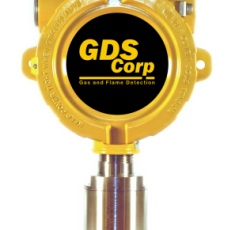In virtually all industrial facilities today, advanced technology has led to the installation of equipment costing millions of dollars. As a result, there is now a much greater emphasis on industrial safety programs, since companies have invested heavily in their facilities and the equipment they contain. To ensure fires or explosions do not occur, it’s crucial to choose flammable gas detection systems that possess the most up-to-date electronics and other technology to keep a facility as safe as possible. However, since the electronics and instrumentation in these systems are being constantly updated, it’s extremely important to make the right choice when trying to prevent flammable gases from leading to fires or explosions. If you are in the process of selecting flammable gas sensors for your facility, here are some general guidelines regarding their instrumentation.
Multiple Calibration Capability
While most of today’s flammable gas monitors need very little calibration, they do nevertheless require monitoring from engineers to make sure they are functioning properly. While this can be done on-site by supervisors, safety engineers, or maintenance technicians, most of today’s gas detectors are calibrated by engineers located in monitoring centers miles away from the facility. By having this capability, the monitors can be installed in almost any type of facility, making them a very versatile option for many companies.
Real-Time Data Networking
To be as efficient as possible, gas detectors use advanced electronics to integrate with a company’s computer data networks. By doing so, it’s possible to transmit real-time data to numerous sources at once, including monitoring centers, on-site managers and engineers, and maintenance technicians who may be in charge of installing, testing, and repairing equipment. Using advanced microprocessors, these monitors can not only send data far away, but also to on-site workers who use mobile devices such as smartphones, tablets, and laptops. By giving workers accurate and reliable data in real-time, a facility can greatly increase worker safety.
Combination Warning Systems
Since these sensors are responsible for multiple flammable gas applications, they are equipped with warning systems that combine both audible and visual systems to alert workers to possible danger. For example, since many industrial facilities are quite large, it’s likely many workers will not be nearby to spot warning lights or strobes. However, they could hear warning sirens alerting them to danger. And for those areas where noise levels are too high for sirens to be effective, lights and strobes can notify workers of a possible fire or explosion. By having multiple warning systems as part of their package, gas detectors can be programmed to use whatever types of alarms will be most effective within individual facilities.
Have Your Questions Answered
Needless to say, learning about a gas detector’s instrumentation can be a difficult and complex process. Rather than make the wrong decision about the type of gas detector to purchase for your facility, contact Global Detection Systems to speak with a qualified safety engineer. By doing so, you’ll get your questions answered by an experienced and knowledgeable industry professional.

